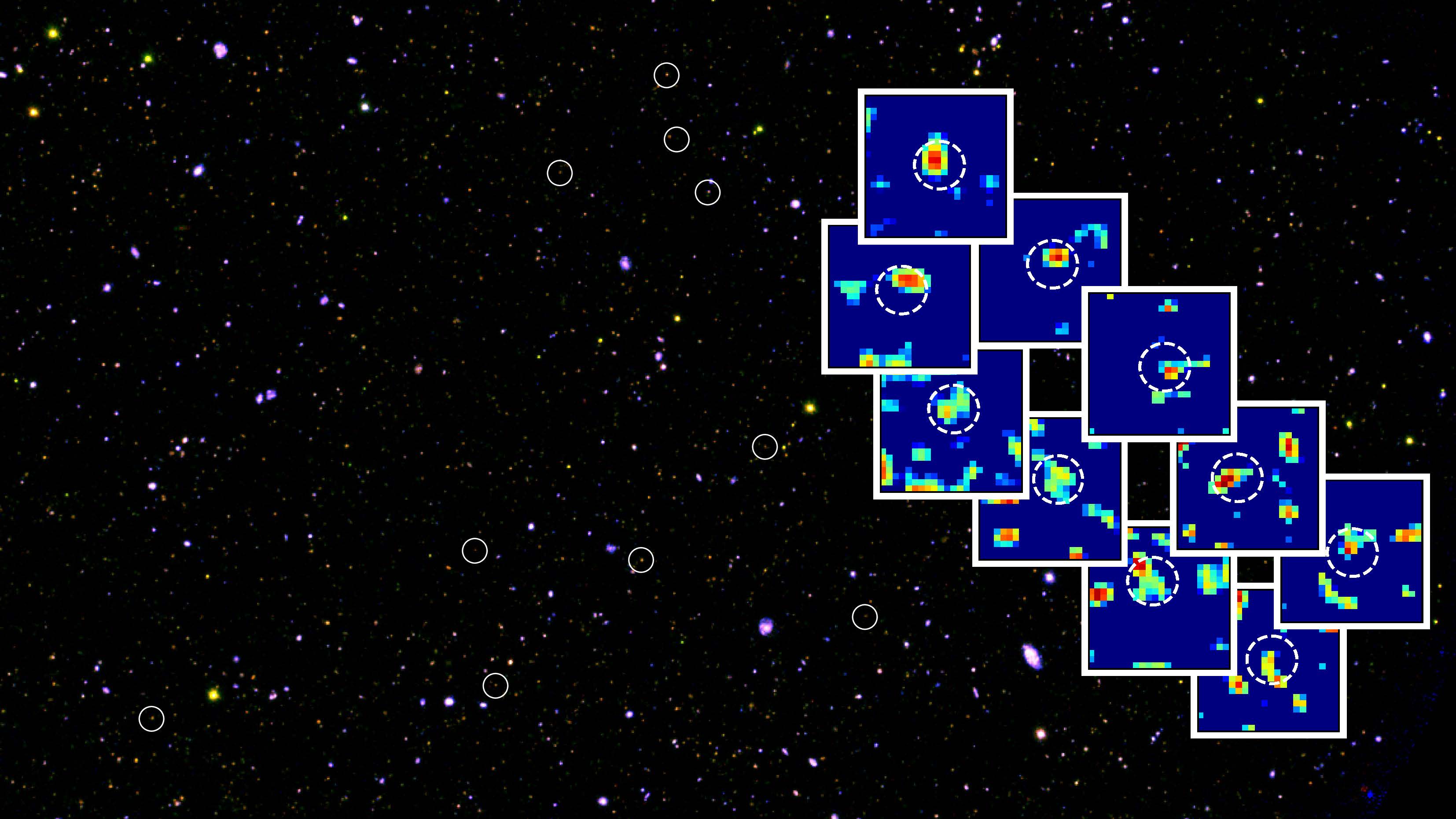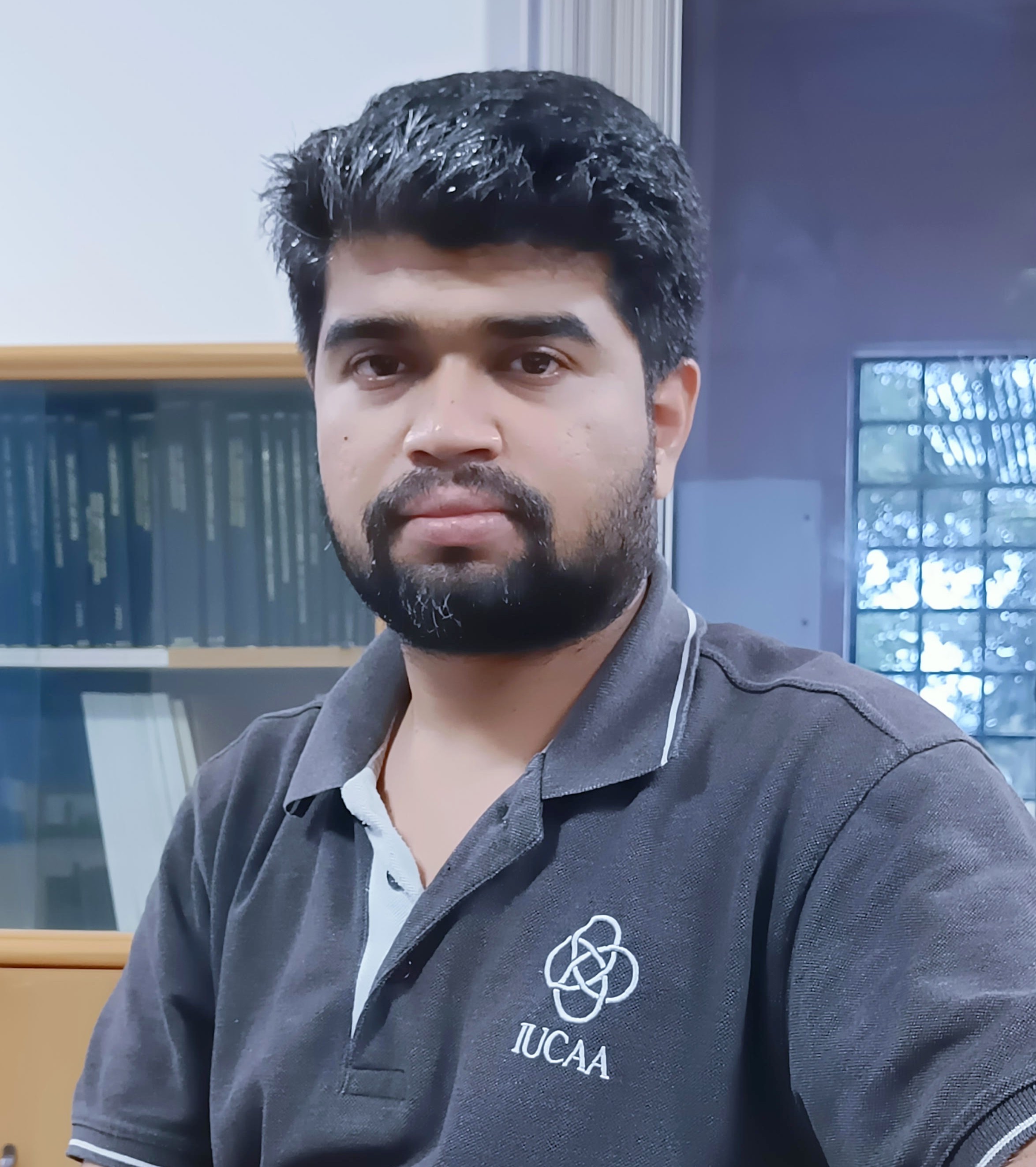
Figure 1: Images of the ten LyC leaking galaxies discovered, with the Astrosat Ultraviolet Deep Field in the background.
An international team of astronomers have been successful in detecting ionizing photons from a rare type of galaxies known as Lyman Continuum Leakers using the Ultraviolet Imaging Telescope (UVIT) onboard AstroSat. “Detecting ionizing UV radiation from such galaxies is extremely challenging and was possible only because of the unique capabilities and high sensitivity of UVIT”, said Suraj Dhiwar, the lead author of the research published in 'The Astrophysical Journal Letters'.
Within the first billion years after the Big Bang, our Universe went through a major phase transition known as reionization, a process in which neutral hydrogen atoms dissociated into protons and electrons when they are struck by high energy UV radiation below wavelengths 912 Å known as Lyman Continuum emission. Understanding the cosmic reionization and the sources responsible for this process remains one of the frontier problems in astronomy.
“The Lyman continuum emission can be easily absorbed or scattered by the interstellar medium or the cir-cumgalactic medium of their host galaxies. Even when some of these ionizing photons manage to come out of the galaxy’s environment, they maybe absorbed by the vast intergalactic medium between us and the galaxy. This is what makes their discovery a rare event in astrophysics. Thanks to UVIT’s resolution and sensitivity that allowed us to create UV deep field in the far-ultraviolet filter.” says Prof. Kanak Saha.
In the current discovery, astronomers detected 10 Lyman continuum emitting galaxies from the peak era of cosmic star formation history, making it the first coherent sample of Lyman continuum leakers at this epoch. More interestingly, these Lyman Continuum photons have wavelength ~600 Å, falling in the Extreme Ultraviolet regime, the shortest ultraviolet wavelength with which a galaxy has been imaged so far. These galaxies are about 8 - 9 billion light years away from the Earth and have intense star formation rates, with some of them forming massive young stars at a rate 100 times higher than our Milky Way Galaxy. Prof. Rogier Windhorst said “the discovery would fill an important niche in understanding the evolution of these rare objects, which are at an epoch when the star formation was at its peak in the cosmic star formation history.”
Within the first billion years after the Big Bang, our Universe went through a major phase transition known as reionization, a process in which neutral hydrogen atoms dissociated into protons and electrons when they are struck by high energy UV radiation below wavelengths 912 Å known as Lyman Continuum emission. Understanding the cosmic reionization and the sources responsible for this process remains one of the frontier problems in astronomy.
“The Lyman continuum emission can be easily absorbed or scattered by the interstellar medium or the cir-cumgalactic medium of their host galaxies. Even when some of these ionizing photons manage to come out of the galaxy’s environment, they maybe absorbed by the vast intergalactic medium between us and the galaxy. This is what makes their discovery a rare event in astrophysics. Thanks to UVIT’s resolution and sensitivity that allowed us to create UV deep field in the far-ultraviolet filter.” says Prof. Kanak Saha.
In the current discovery, astronomers detected 10 Lyman continuum emitting galaxies from the peak era of cosmic star formation history, making it the first coherent sample of Lyman continuum leakers at this epoch. More interestingly, these Lyman Continuum photons have wavelength ~600 Å, falling in the Extreme Ultraviolet regime, the shortest ultraviolet wavelength with which a galaxy has been imaged so far. These galaxies are about 8 - 9 billion light years away from the Earth and have intense star formation rates, with some of them forming massive young stars at a rate 100 times higher than our Milky Way Galaxy. Prof. Rogier Windhorst said “the discovery would fill an important niche in understanding the evolution of these rare objects, which are at an epoch when the star formation was at its peak in the cosmic star formation history.”
Beside the UV observation from Astrosat, the Hubble Space Telescope was used to obtain the optical/infrared imaging and spectroscopy for these rare galaxies. The research utilized the deep ultraviolet observations made by Prof. Kanak Saha in 2018 using UVIT onboard Astrosat and was funded by the Indian Space Research Organisation (ISRO). The team of researchers includes Suraj Dhiwar, a research scholar at Inter-University Centre for Astronomy and Astrophysics (IUCAA) and Ph.D. student at the Savitribai Phule Pune University, Prof. Kanak Saha, Soumil Maulick and Dr. Chayan Mondal from IUCAA, Dr. Brent Smith and Prof. Rogier Windhorst from Arizona State University, USA, Prof. Marc Rafelski of NASA’s Space Telescope Science Institute, USA and Prof. Harry Teplitz from Caltech, USA.
Reference:
Lyman Continuum Leakers in the AstroSat Ultraviolet Deep Field: Extreme-ultraviolet Emitters at the Cosmic NoonSuraj Dhiwar, Kanak Saha, Soumil Maulick, Brent M. Smith, Chayan Mondal, Harry I. Teplitz, Marc Rafelski, and Rogier A. Windhorst
The Astrophysical Journal Letters, 963, L23, 2024 [ DOI: 10.3847/2041-8213/ad2344 ]
Find the Hindi translation of the above text here: Click Here
Research contacts:
 |
Prof. Kanak Saha IUCAA, Pune E-mail: kanak_at_iucaa.in Phone: +91-20-2560 4124 |
 |
Mr. Suraj Dhiwar IUCAA, Pune E-mail: suraj_at_iucaa.in Phone: +91-020-2560 4306 Mobile: +91-90112 92643 |
